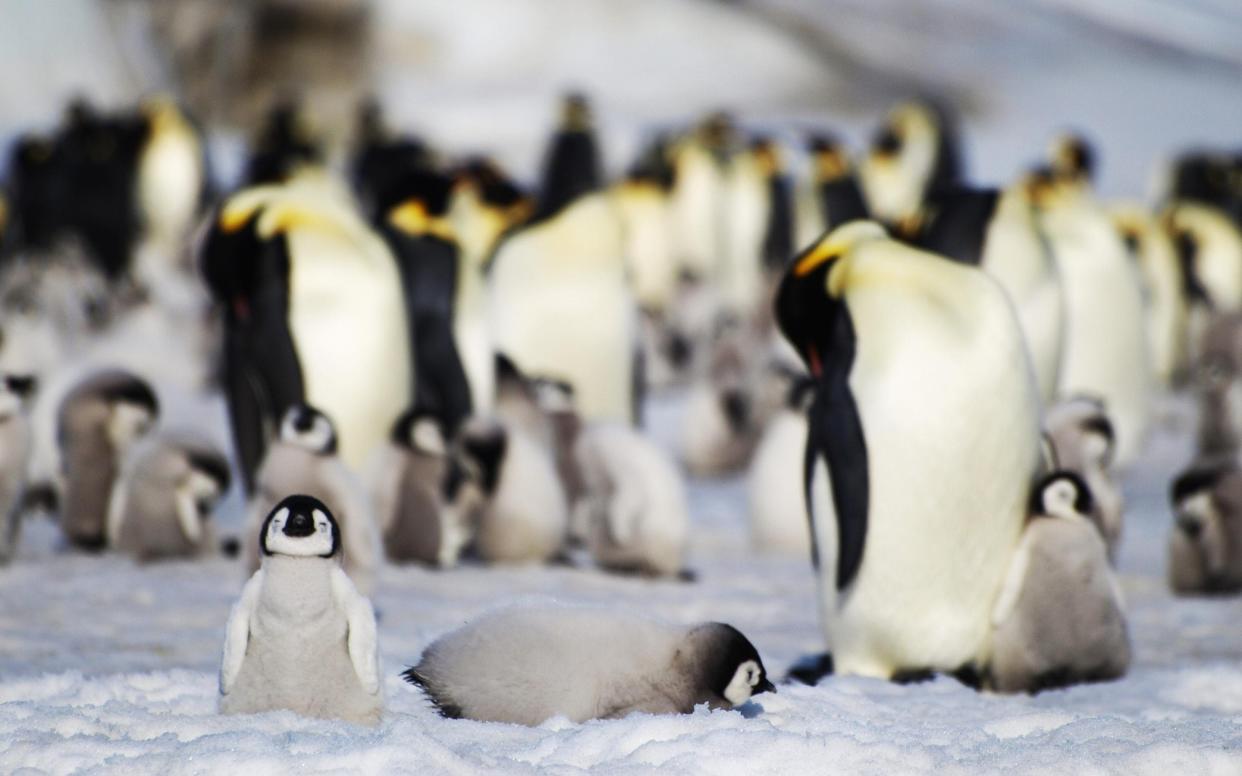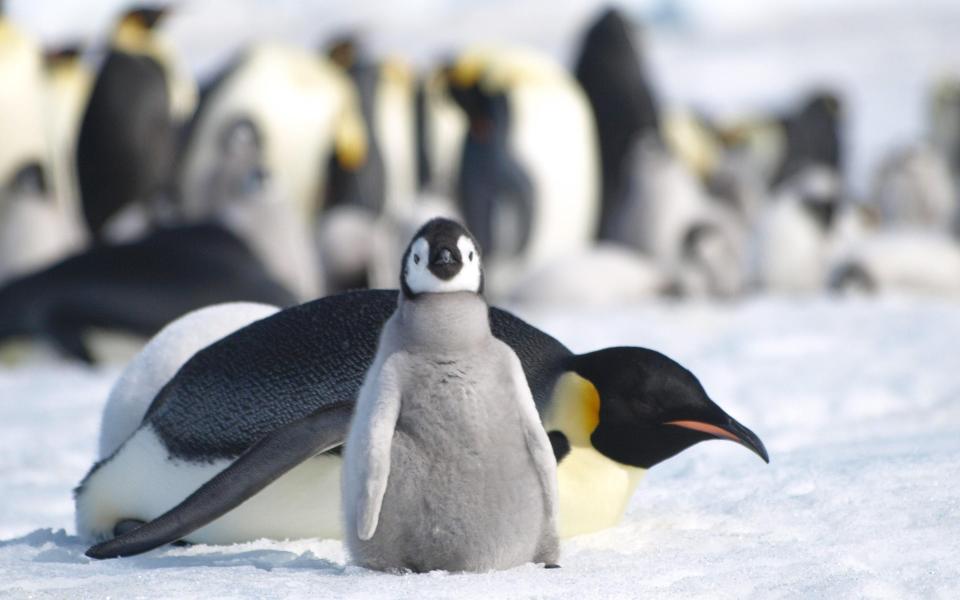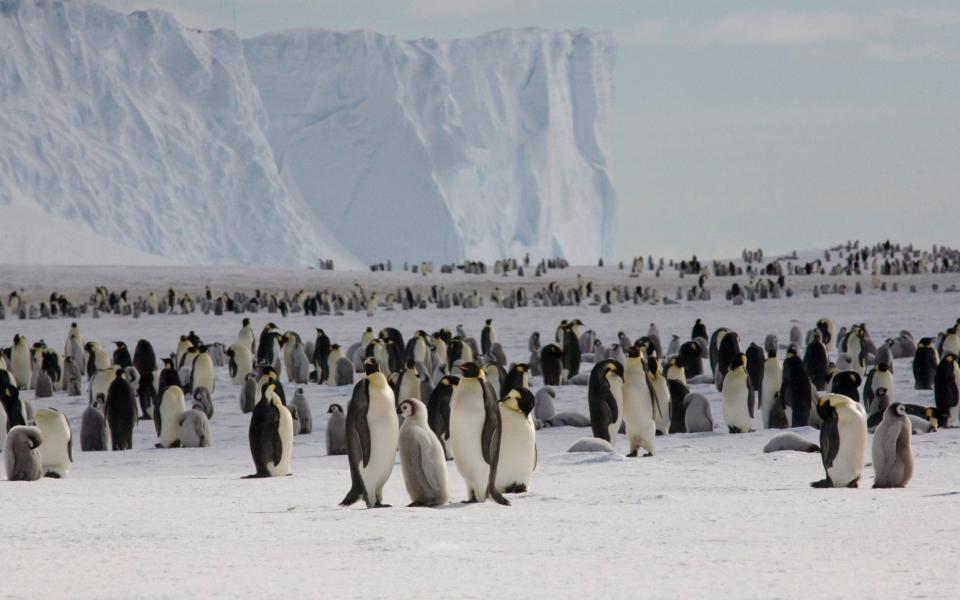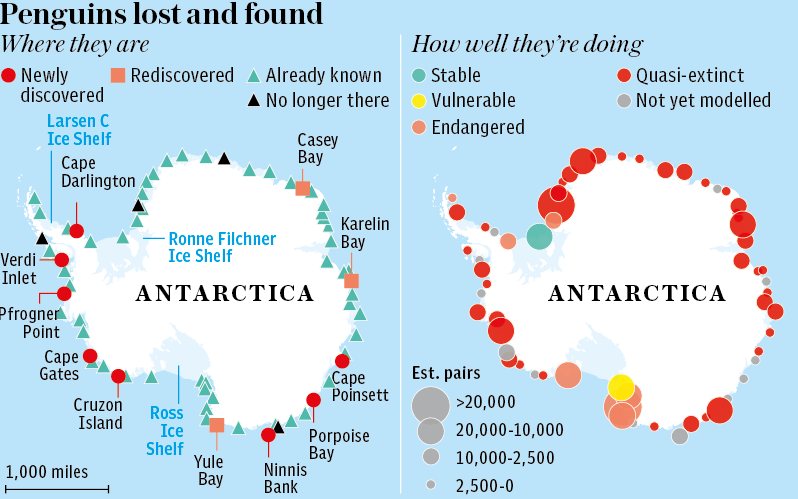New emperor penguin colonies discovered using satellites

Emperor penguins have been hiding from us, satellite images have revealed, after scientists discovered 11 additional colonies in the Antarctic.
The new colonies, three of which were previously identified but never confirmed, provides a welcome boost to population numbers by around 25,000 to 50,000 - bringing the global total to around half a million.
But the researchers, of the British Antarctic Survey (BAS), warned the locations are likely to be impacted by climate change, signaling potential disaster for the great birds.
It follows previous studies which have estimated the species could drastically decline by the end of the century due to global warming.


The findings, reported in the journal Remote Sensing in Ecology and Conservation, were made using images from the European Commission's Copernicus Sentinel-2 satellite.
The powerful satellite enabled the researchers to monitor existing colonies and discover the new ones quickly by scouring the images in search of “brown pixels”, which would indicate penguin colonies.
The 11 colonies were located on Antarctica’s coastline, two in the peninsula region, three in the west and the remaining six in the east.
They included two new breeding sites on ice shelves, as well as two off-shore sites.
The latter colonies were more than 100 miles offshore on sea ice which had formed around grounded icebergs, in what the researchers said was “a surprising new finding”.
“Recognition that emperor penguins can breed a long way from the coast is important; it confirms that potential breeding habitat exists in areas not previously documented,” the researchers said.

But as the new areas are further north, meaning they will be in warmer temperatures, they are more likely to be susceptible to melting ice, they added.
And, using data from a 2019 study which mapped areas most likely to be impacted by climate change, the researchers found the new colonies are all located in areas where colonies are expected to be extinct or quasi-extinct by the end of the century.
Although the small size of the colonies does suggest there could be even smaller ones elsewhere, their existence would be unlikely to contribute greatly to global populations, they said.
“It is evident that future climate change is likely to affect them,” they said. “Our findings therefore suggest the possibility of an even greater proportion of the global population will be vulnerable to climate change, than previously considered.”
Dr Phil Trathan, Head of Conservation Biology at BAS, said: “Birds in these sites are therefore probably the 'canaries in the coalmine' - we need to watch these sites carefully as climate change will affect this region."
Dr Caroline Coch, Polar Specialist at WWF, said "urgent action" was needed to protect the penguins, including marine protected areas and cutting greenhouse gas emissions.
“Emperor penguins, though adapted to the most extreme and remote frontier of our planet, now find themselves living on the frontline of the climate crisis. While this discovery is exciting, Antarctic life is facing an uncertain future," she said.

